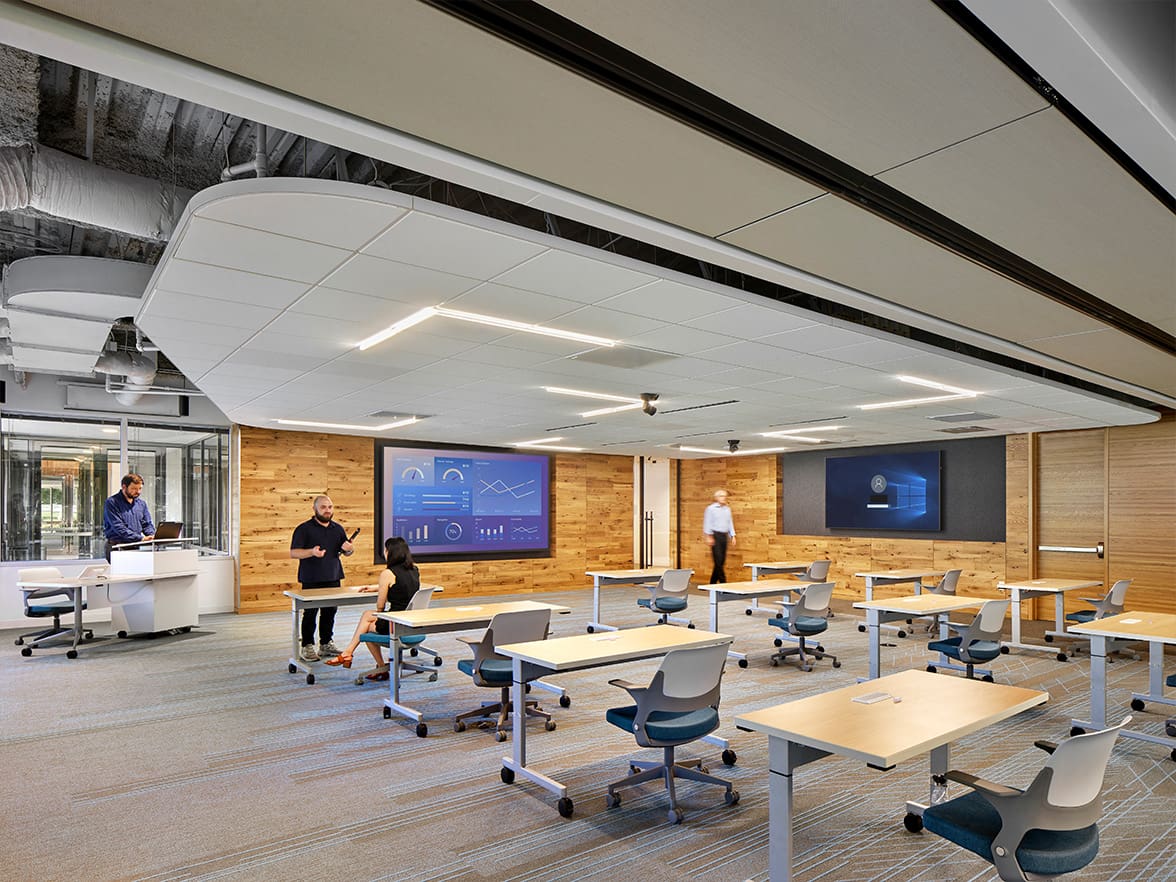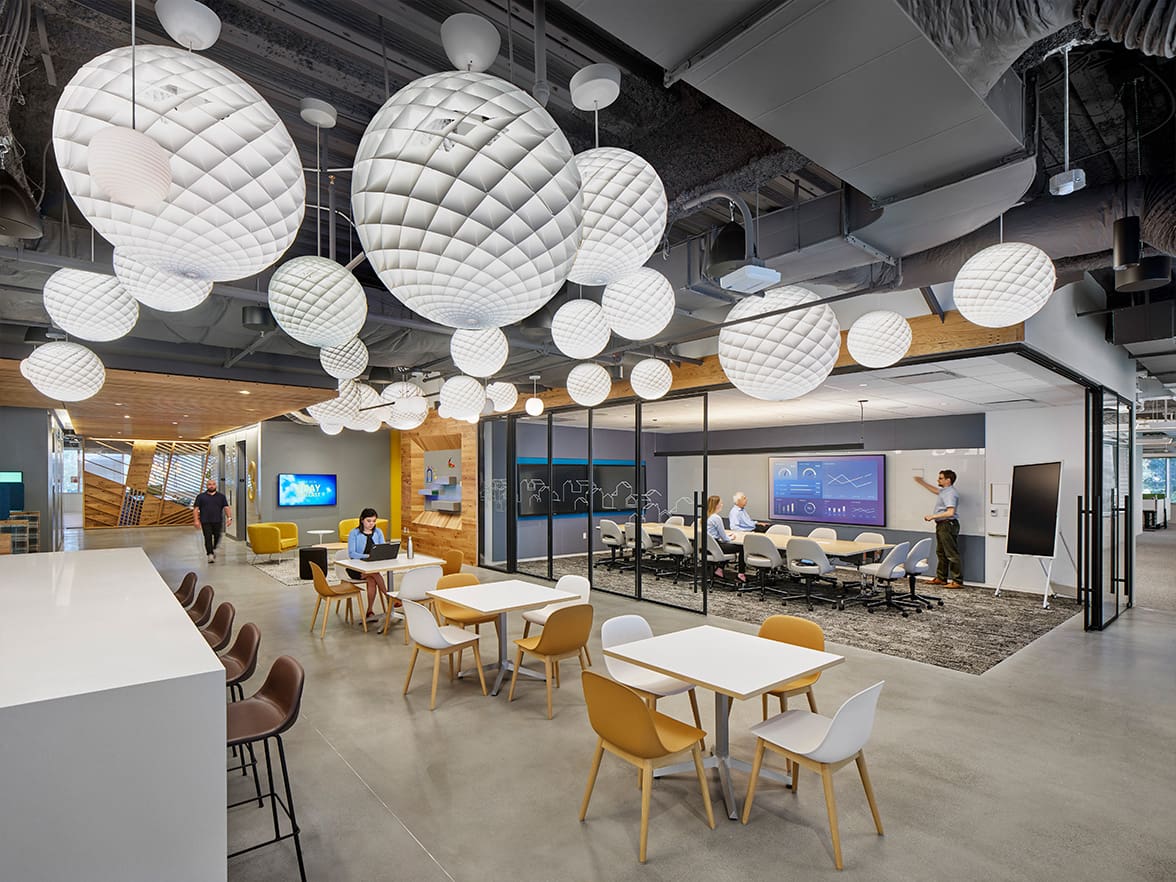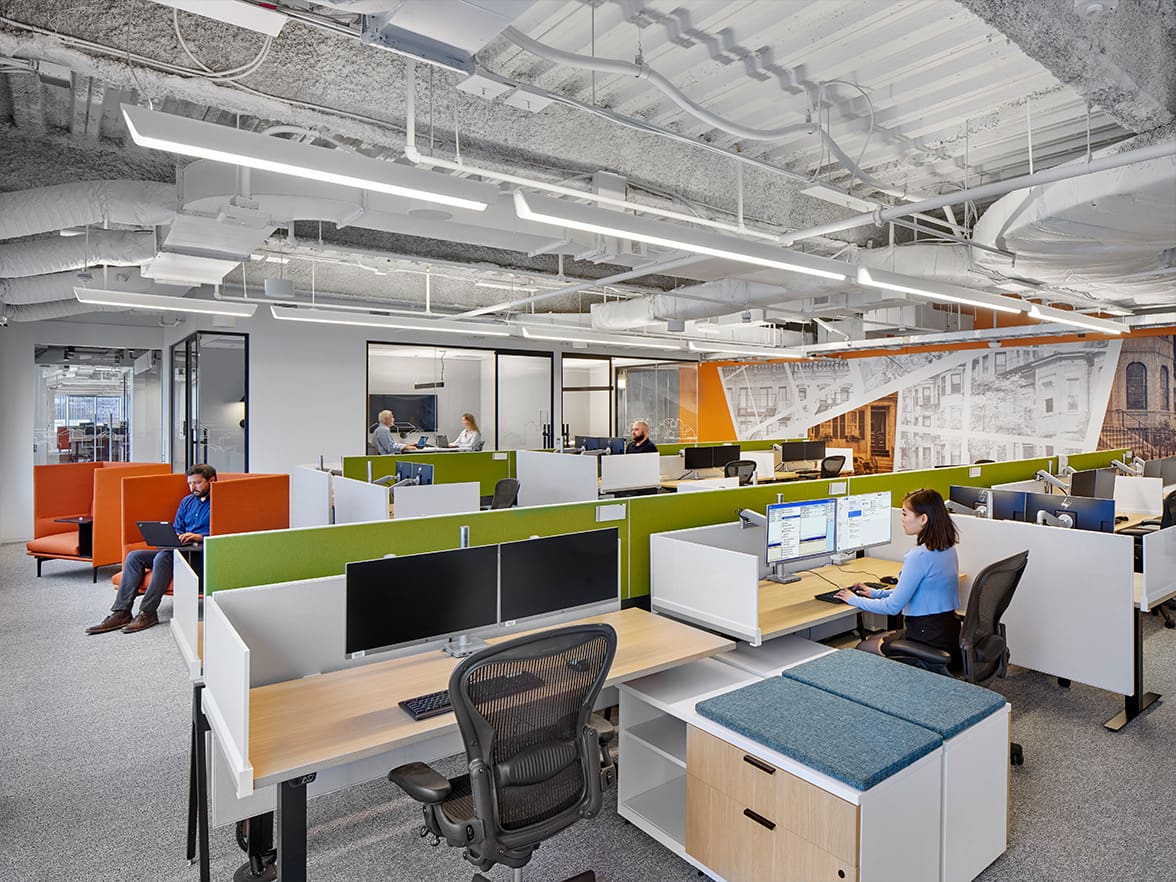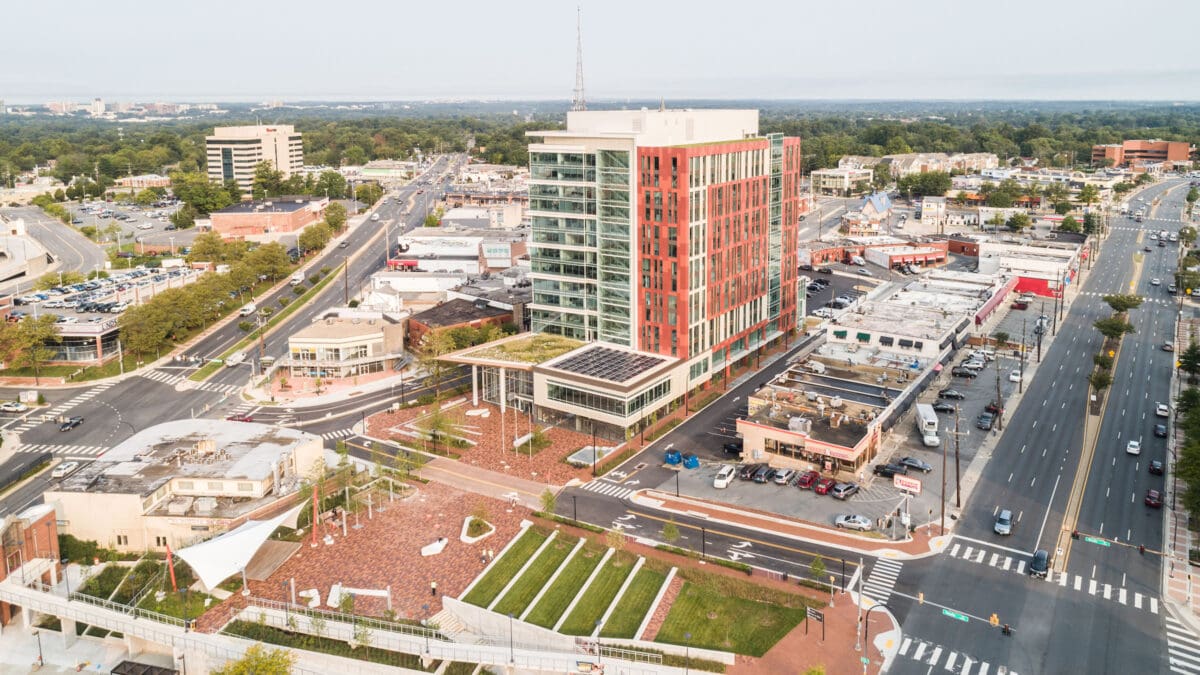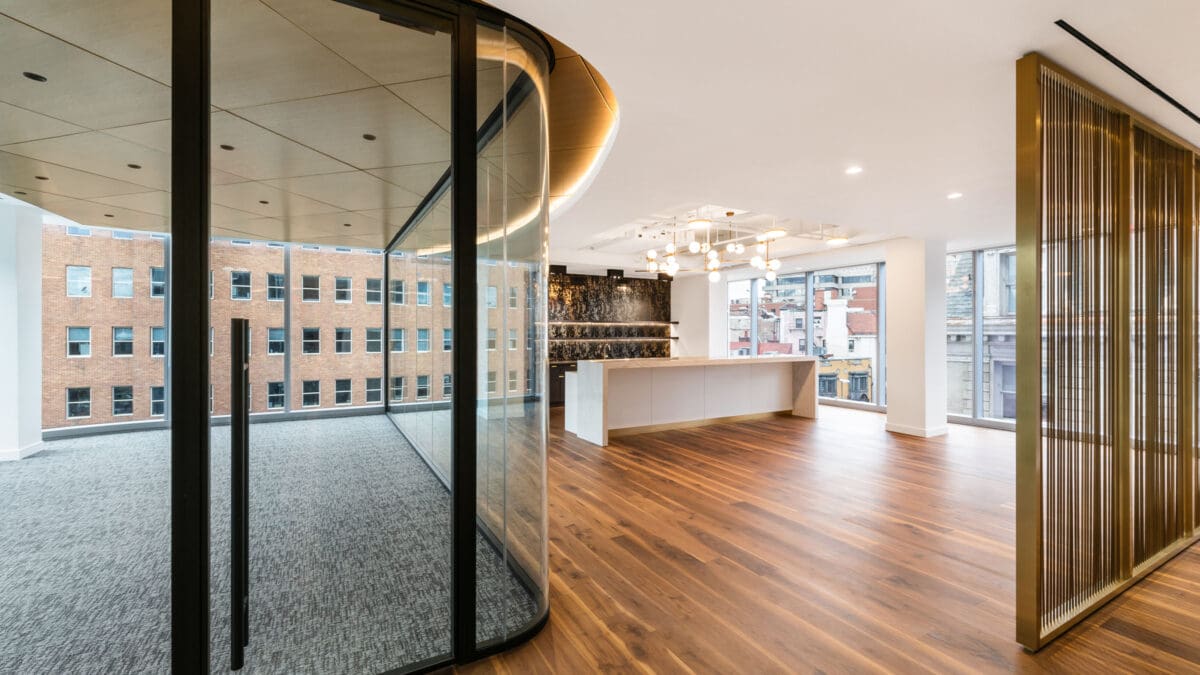GHT is guiding a confidential international development organization through a multi-year lighting transformation, delivering energy-efficient LED upgrades and IT-integrated controls to enhance sustainability, efficiency, and user experience across its downtown Washington, DC campus.

Project Overview
In 2018, GHT was engaged by a confidential international development organization to lead the design and implementation of a comprehensive lighting system upgrade for its headquarters campus main complex. The project spanned from 2018 to an anticipated completion of its first phase in July/August 2025, evolving through multiple phases to meet the Owner’s evolving needs. Initially tasked with delivering 100% Construction Documents (CD) for the entire complex between 2018 and 2020, GHT adapted to shifting priorities by issuing a reduced scope pricing set in April 2020, followed by phased construction documents in 2023. Construction began in August 2023, with a focus on standardizing fixtures, transitioning to LED technology, and integrating a centralized, IT-connected lighting control system (Lutron Vive).
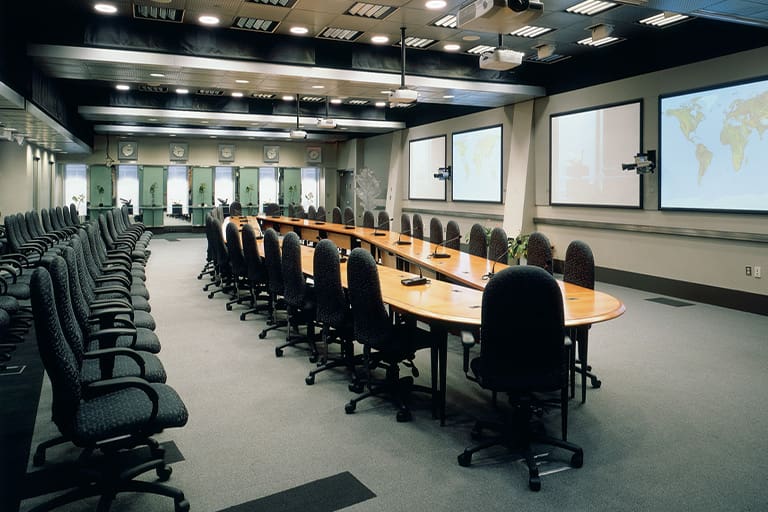
Scope of Work
2018-2020: Complete 100% CD set for the main complex, including demolition and new work drawings, fixture schedules, control wiring diagrams, and a cost estimate for construction pricing. The design replaced diverse lamp types with standardized LED fixtures and implemented the Lutron Vive system.
April 2020: Issued a pricing set for a reduced scope due to budget or prioritization shifts.
February-March 2023: Developed two phased CD sets:
-
- Reduced Scope: Public areas (corridors, restrooms, elevator lobbies, conference rooms).
- Remainder of Scope: Tenant and special-use areas.
August 2023: Construction commenced, with the Lutron Vive infrastructure installed in the reduced scope phase.
Timeline:
- Engagement: 2018
- Design Phases: 2018-2020 (initial), 2023 (phased revisions)
- Construction: August 2023 – July/August 2025 (expected)
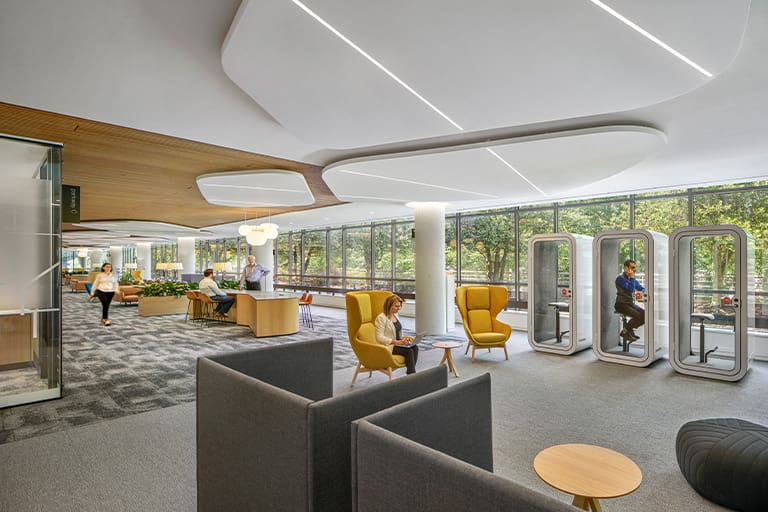
Challenges
Scope Evolution: The project transitioned from a full-complex upgrade to a phased approach, requiring GHT to adapt deliverables and timelines to align with the Owner’s budget and operational constraints.
Existing Infrastructure: Replacing a miscellaneous, non-centralized lighting system with a modern, networked solution demanded detailed coordination with the Owner’s IT team and Lutron for the Vive system integration.
Feasibility Concerns: The Owner questioned whether 1×4 fixtures could be installed at the building perimeter, necessitating additional field surveys to assess above-ceiling conflicts.
Subconsultant Coordination: Managing inputs from CM Kling (lighting consultant) and Axias Building Value (cost estimator) required seamless integration into GHT’s lead design role.
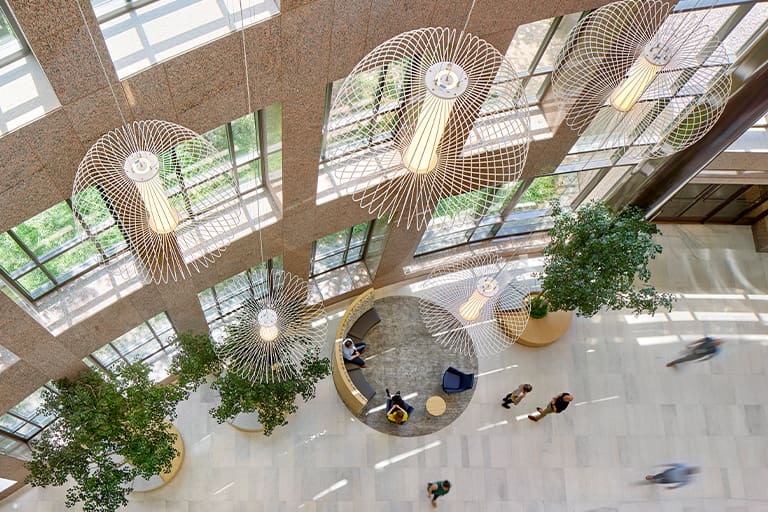
Value Delivered to Campus Owners
GHT brought significant value to the organization throughout the project by combining technical expertise, adaptability, and proactive problem-solving:
Adaptable Design Solutions: GHT responded to scope changes by delivering phased CD sets in 2023, ensuring the project remained feasible while prioritizing high-traffic public areas and laying the groundwork (Lutron Vive hubs) for future expansion. In 2017-2018, GHT collaborated with CM Kling to design a space mockup, allowing the Owner to visualize proposed lighting and controls before committing to the full design.
Feasibility and Decision Support: When the Owner requested a feasibility study for 1×4 perimeter fixtures, GHT conducted a field survey, documented conflicts, and provided a detailed report. This empowered the Owner to make informed, cost-effective decisions.
Energy Efficiency and Standardization: By transitioning to LED fixtures, GHT eliminated the need for multiple lamp types, simplifying maintenance and reducing inventory costs. The Lutron Vive system introduced centralized control, enabling energy savings through occupancy sensors, daylighting controls, and timeclock scheduling.
Enhanced Functionality: The design standardized conference room dimming, implemented wireless local controls (vacancy/occupancy sensors, override switches), and installed daylighting controls at select perimeter rooms, with plans for full deployment in later phases.
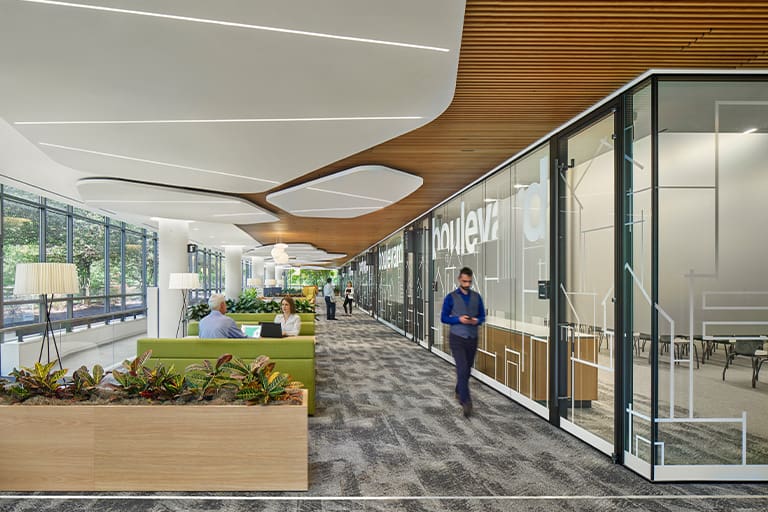
Deliverables and Subconsultant Coordination
The ultimate deliverable was a comprehensive set of construction documents and a fully implemented lighting system design featuring:
Standardized LED Fixtures: A single fixture type across the building, reducing maintenance complexity.
Centralized Lutron Vive System: A networked, wireless control system with local and building-wide functionality, including occupancy sensors, dimming, and daylighting controls.
Phased Implementation Plan: Enabling immediate upgrades in public areas while preparing for future expansion.
Today, the organization uses this system to implement improvements and manage lighting efficiently across the headquarters campus. The IT-connected Vive system allows staff to program schedules, track energy usage, and adjust settings remotely, while standardized LEDs streamline replacement and upkeep.
Managing Subconsultants
As the lead consultant, GHT orchestrated collaboration with subconsultants:
CM Kling: Provided lighting design support, payback analysis, and greenhouse gas emissions reduction calculations, which GHT integrated into the overall design and Owner presentations.
Axias Building Value: Delivered cost estimates that GHT incorporated into pricing sets and feasibility discussions.
Process: GHT handled proposals, contracts, and coordination, ensuring all subconsultant deliverables aligned with the project vision and timeline.
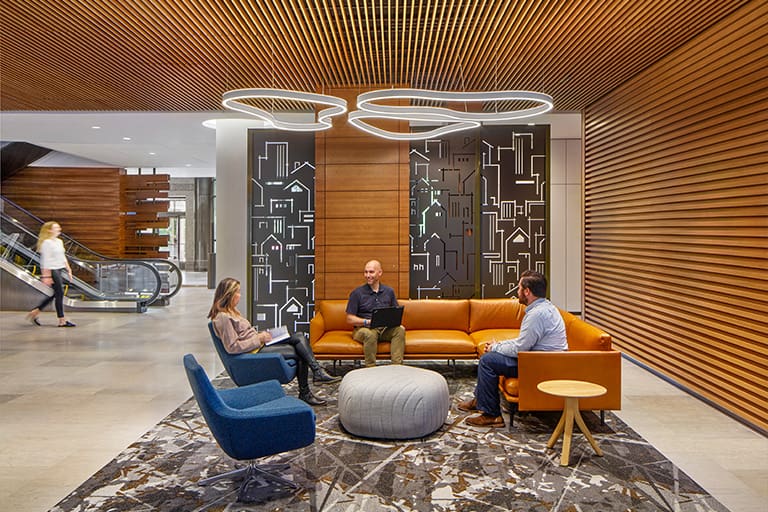
Delivering Value for Owner-Operators
GHT’s work on this project offers a replicable model for other facility owners through the following:
LED Standardization: Transitioning to LEDs eliminates the need to store multiple lamp types or delay replacements until burnouts accumulate, reducing downtime and costs. GHT engineered a transition from disparate, outdated systems to a cohesive, LED-based solution, demonstrating deep knowledge of electrical load management and fixture specification.
Networked Controls (Lutron Vive): A centralized system provides energy tracking, scheduling flexibility, and scalability — ideal for campuses aiming to optimize efficiency and adapt to future needs. The design and implementation of the Lutron Vive system required advanced electrical and IT coordination, highlighting GHT’s ability to bridge traditional electrical design with modern networked controls.
Field Coordination and Phased Implementation: The perimeter fixture feasibility study underscored GHT’s hands-on electrical assessment skills, identifying and resolving real-world installation challenges. GHT’s phased approach demonstrates how large-scale upgrades can be broken into manageable steps, balancing immediate benefits with long-term goals.
Through adaptability, technical prowess, and a client-centric approach, GHT transformed the headquarters lighting system of a confidential international development organization into a modern, efficient, and sustainable asset. By overcoming scope challenges, delivering actionable insights, and leveraging electrical expertise, GHT not only met but exceeded the Owner’s expectations. This case study exemplifies how strategic electrical design can drive operational value, offering a blueprint for other owner-operators seeking to modernize their facilities.

